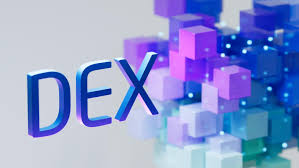Introduction | Carl: Punishment in Eth 2.0
Editor's Note: The Ethereum 2.0 research team conducted an AMA (questionable) event on Reddit for 12 hours on July 15, 2019. This is an excerpt from the Q&A.
Q: I feel like everyone is coveting the pledge award. But how strong is the punishment? Is there a different penalty for different malicious behaviors (offline vs. double sign)? Is it still a design with a maximum penalty of 60.8% in 18 days?
Carl: I think you should confuse two things, "slashing" and "inactivity leak".
If your certifier node continues to be offline for 18 days and the beacon chain cannot be finalized, then your margin will be reduced by up to 60.8% in 18 days.
- The latest development of the Ethereum Layer-2 protocol: Plasma and state channels go hand in hand
- The Galaxy Consensus Node plans to add Southeast Asian members – RiveX!
- Centralized Exchange VS Decentralized Exchange Who is the future of cryptocurrency?
If a verifier makes a malicious behavior that can be identified, they will be fined. Assuming that the client software is written better, this situation is almost impossible. The minimum penalty is 1 eth, but the penalty will increase linearly with the number of recently verified penalists.
See here for more information.
Danny: Note, if you are offline, but the chain is not affected, it is still a normal block, then you just can't get a reward, and you won't lose the margin; "The margin is rapidly reduced in two weeks" is only in the chain. It does not appear when the block cannot be finalized normally.
This is another reason why you should use different settings with other nodes!
Q: What happens if I pledge 32 eth but I am fined once? My margin is below 32 eth, will I be kicked out of the Certifier team?
Justin: If slashed, the verifier will be kicked out. If a verifier makes his margin balance below 16 eth because of the accumulated (non-penalty) penalty, there is another eviction mechanism to dispose of.
Danny: You will lose some ETH. The minimum penalty is not designed to be 1 eth.
There is also an additional penalty mechanism that will be related to the number of other non-compliance agreements that have occurred in the near future. The more certifiers have been fined recently, the more ETHs you lose. If about 1/3 of the verifiers are fined in the near future, you will be spiked – losing all the margin.
The point is, you'd better deploy a different validator setup than the other nodes, and be sure to do some fault tolerance before signing the message.
Q: What are the non-penalty punishments?
Carl: If other verifiers vote for the same block, and you don't, you have to be punished with some minor penalties; if the chain fails to be finalized for a long time, after a certain period of time, the off-line verifier will Will be "lazy punishment."
Justin: We've designed some minor penalties for not producing optimal proofs, as well as penalties for offline verifiers (search for get_attestation_deltasand get_crosslink_deltas in the eth2.0 spec ).
Q: Based on the technical details of the "block.eh1_data" code base, is it possible to say that (if all goes well), starting in January 2020, Ethereum will have a hybrid verification system for PoW and PoS. All the traffic of the weak countries is still on eth1.0. What do we pledgers have to verify? Can we only verify verifier qualifications, pledge rewards and penalties?
Carl: In order to use Eth2 to provide certainty to the Eth1 chain, we need two designs: 1) The Eth2 chain must vote for the Eth1 block (as you pointed out, this has already been achieved); 2) The Eth1 chain must change its The fork selection rule is to be the main block of the finalized block. The latter also requires the Eth1 chain to do a hard fork. This will make it easier for the verifier to finalize what you have already mentioned and what will be added in the future.
In addition, if it is to prevent the black swan event in Eth2 early, it is safer to add Eth1 tight coupling-deterministic content.
Original link: https://docs.ethhub.io/other/ethereum-2.0-ama/?from=singlemessage&isappinstalled=0#part-2
Author: Eth2 Research Team
Translation & Proofreading: Ajian
(This article is from the EthFans of Ethereum fans, and it is strictly forbidden to reprint without the permission of the author.
We will continue to update Blocking; if you have any questions or suggestions, please contact us!
Was this article helpful?
93 out of 132 found this helpful
Related articles
- US Presidential Candidate Andrew Yang will accept bitcoin donations from Lightning Network
- Morning market analysis: BTC shock adjustment is still continuing, mainstream currencies are still under strong pressure
- EU: At present, the digital currency market is “anti-competitive”, and the European Central Bank’s digital currency will reshape the competition.
- The market continued to oscillate and shuffle, and prudently waited patiently
- Looking at the DeFi asset management platform from the point of view of the traditional fund: What is the future cap of the DeFi world?
- Carbon emissions are comparable to first-tier cities in Europe and America, and bitcoin is produced as a “black hole” in energy consumption.
- The second brother of EOS, the originator of the census content platform, how is it now?





